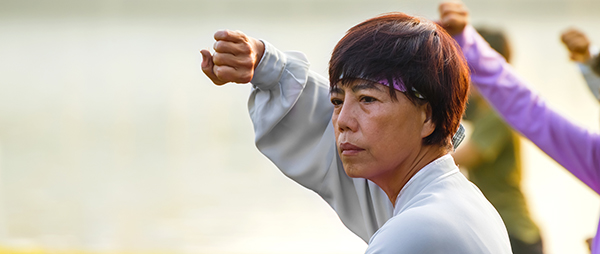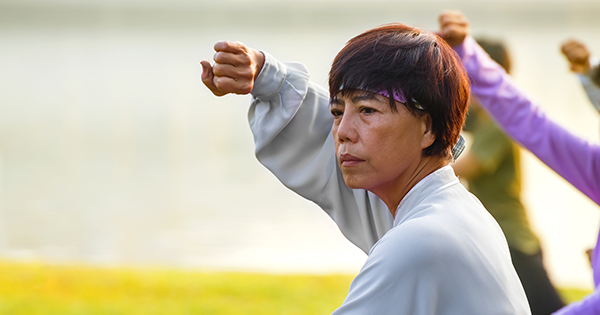
It is our “whole-body” alignment that allows us to “relax” since forces are transmitted through the “connected” structure of our skeleton. This alignment helps us to direct an opponent’s forces into our feet (our root) without stiffening with muscular resistance/tension. It is improper alignments of our structure (weak joint angles, awkward relationships of body segments, etc.) that make us tense our muscles in an attempt to avoid breaking our structure. The better aligned we are, the more we can relax, and to even relax while transmitting power/force.
We rely on stabilizer muscles to integrate our skeletal structure rather than our mobilizing muscles (flexors and extensors). This allows us to appear relaxed, though not collapsing (like “steel wrapped in cotton”), and allows us to maintain our changeability. The changeability comes from our mobilizing muscles which are freed up to move our skeleton when not being occupied by tensions from trying to use them to maintain our structure while under pressure.
One can also generate force through sequential kinetic chains which transfer momentum from one segment of the body to the next (e.g. like for throwing a baseball), which results in speed being imparted to the final segment. This is often how one generates force when striking. But one can also unify the structure such that the contact with the ground is connected all the way through one’s structure and to the point of contact. The ground is projecting to the point of contact throughout the interaction, rather than only the last segment (as occurs when using kinetic chains to transfer momentum).
Taijiquan can also correctly use sequential kinetic chains, and this is sometimes described as acting like a whip. However, the whip-like transmission is typically done when not in contact with the opponent until the instant of impact. This is therefore a different situation than what is being described in this article; the hands leading the body does not apply.
Some schools teach a method of first touching the partner/opponent with one’s fingertips, sometimes followed by the little finger edge of the hand, then the heel of the hand, then dropping or settling the weight of the body into the point of contact. This approach helps in practicing the hand leading the body.
The point of contact leading is often obvious to see when weapons interact. For example, when a partner/opponent contacts one’s sword (劍jian), the contact produces a deflection and pivot of one’s own sword, and this, in large part, influences how we move our body for the counterattack. The sword leads and the body follows/chases. The hand (or sword) leading the body also allows for greater speed since moving the smaller mass of the extremity can be done faster. But one still wants to connect the entire body (be aligned) when the strike impacts the opponent.
In addition to the benefit of being able to follow the opponent when the hand leads, and subsequently aligning to unify the body (the body following), one can also then easily disconnect and reconnect one’s body connections. This is often used to disrupt the force of an opponent by disconnecting one’s own alignment(s) (breaking the opponent’s connection from the point of contact through to either your torso or to your root) and then, when their force is disrupted or jarred, you can reconnect and realign for counterattacking.
It is beneficial to be able to disconnect and reconnect (or separate and unite) at will, depending on the specific situation. One does not want the opponent to be able to align their force into one’s structure, unless you are either stronger than them, or better aligned than they are, and you want to return their force to them (e.g. pengjin; rebounding or “ward-off” energy, 掤勁). One can maintain one’s structure when diverting an opponent’s force (lujin, 履勁, often called “roll-back”), but one can instead disrupt (jar or shake) the opponent’s force, especially if they are “leaning” against you, by suddenly disconnecting, which can compromise their stability.
One should be able to execute attacks with fast hand speeds (hand leading), but still be able to reconnect and unify one’s structure such that “whole-body” power is still used (body follows) when the technique is applied.
When the body is properly aligned it can move as one unit, and it does not really matter which end leads, the feet (root) or the hands (point of contact). Letting the hands lead during partner practice allows one to better follow the partner/opponent. To issue force from a unified structure, the power will be generated from one’s root (typically one’s feet) and generated by the powerful leg muscles before being directed by the waist and expressed at the point of application. When receiving energy the reverse should be practiced, with the point of contact with the partner/opponent initiating, and the body following, and separating and uniting as desired.

Leave a Reply